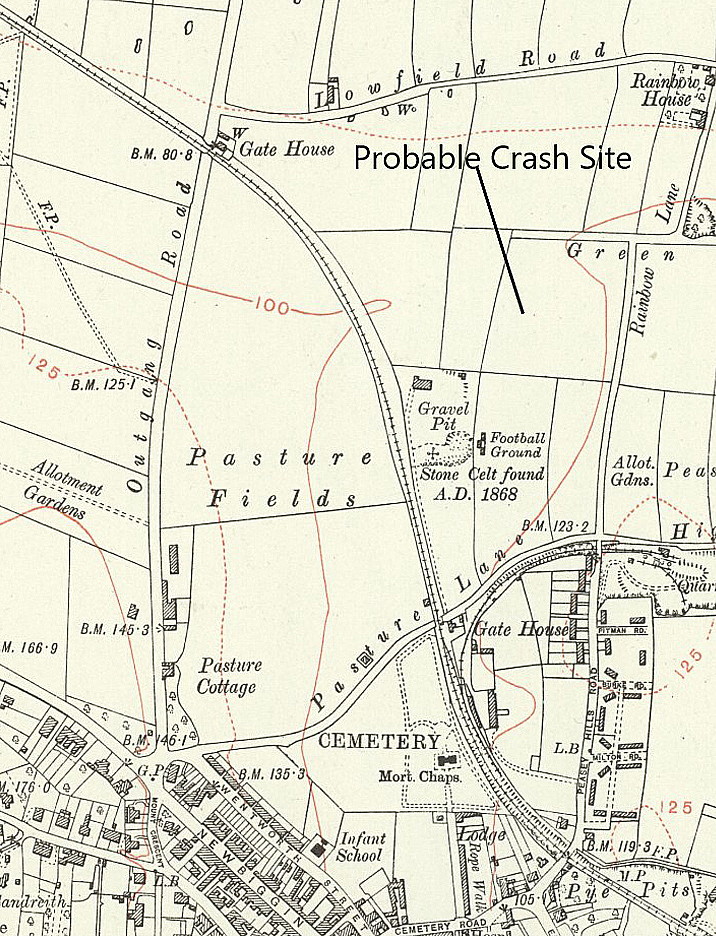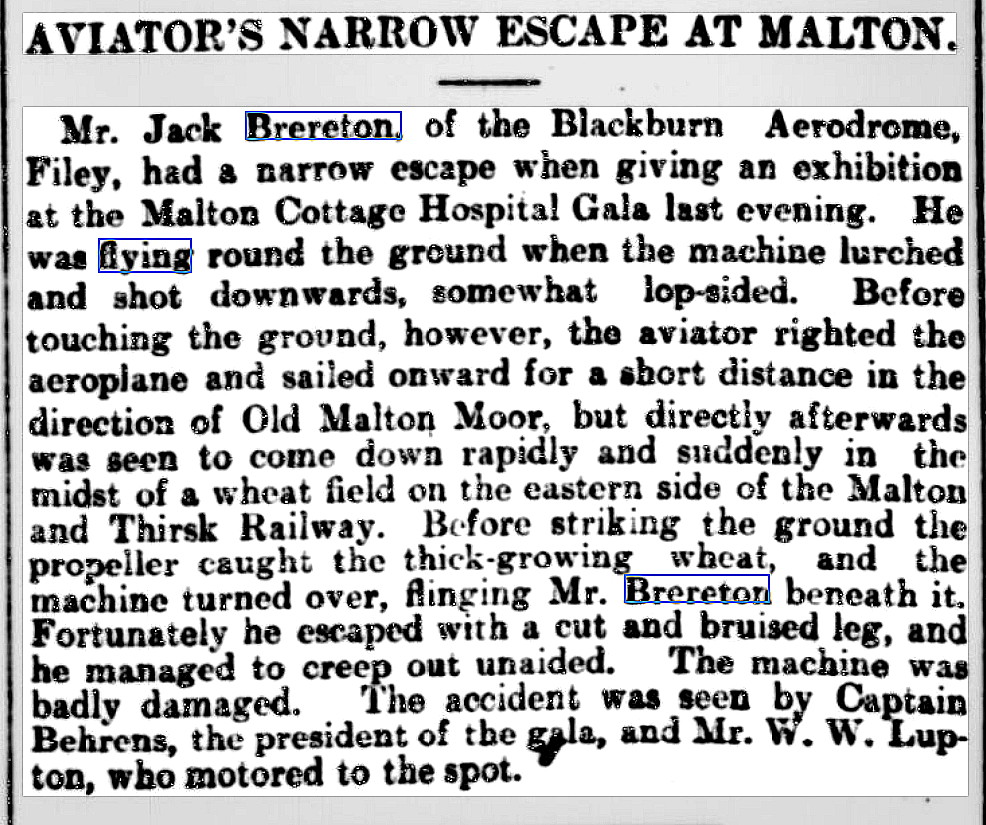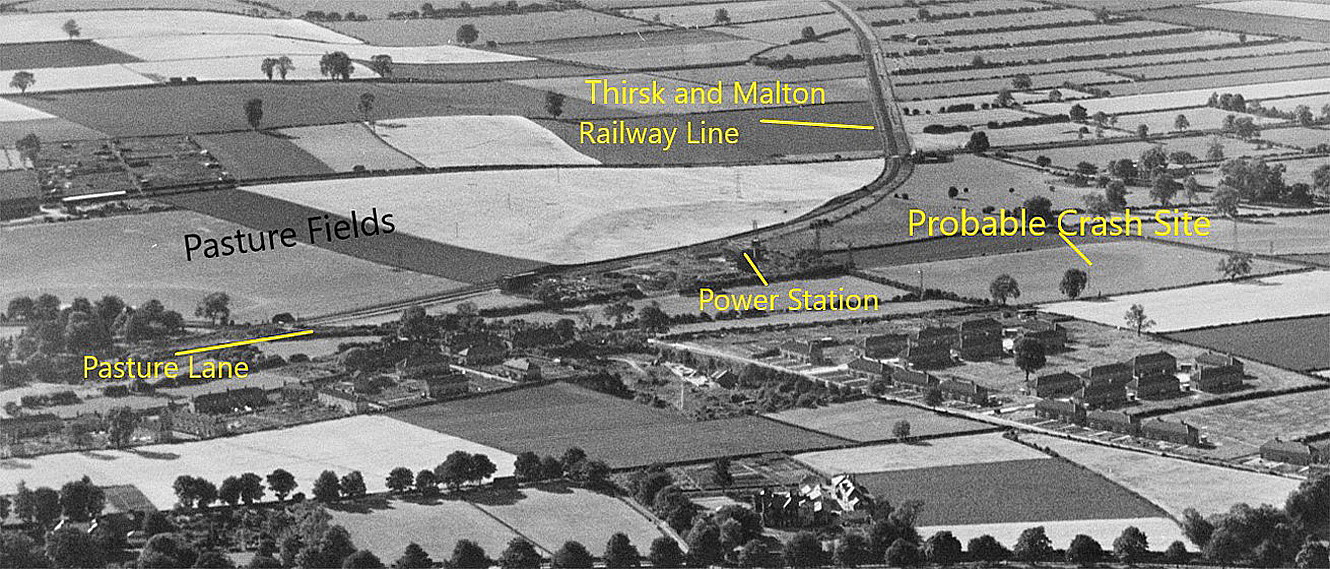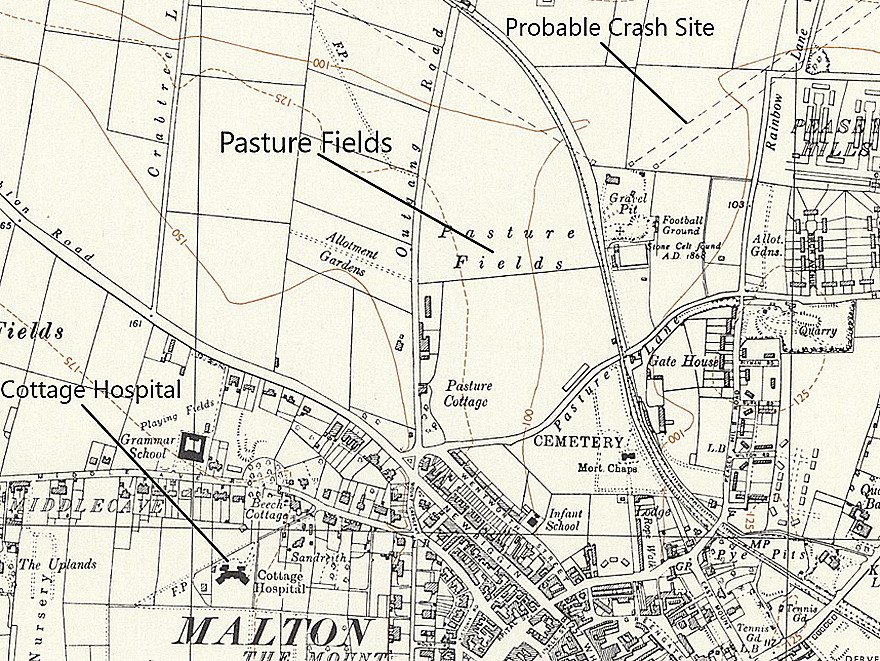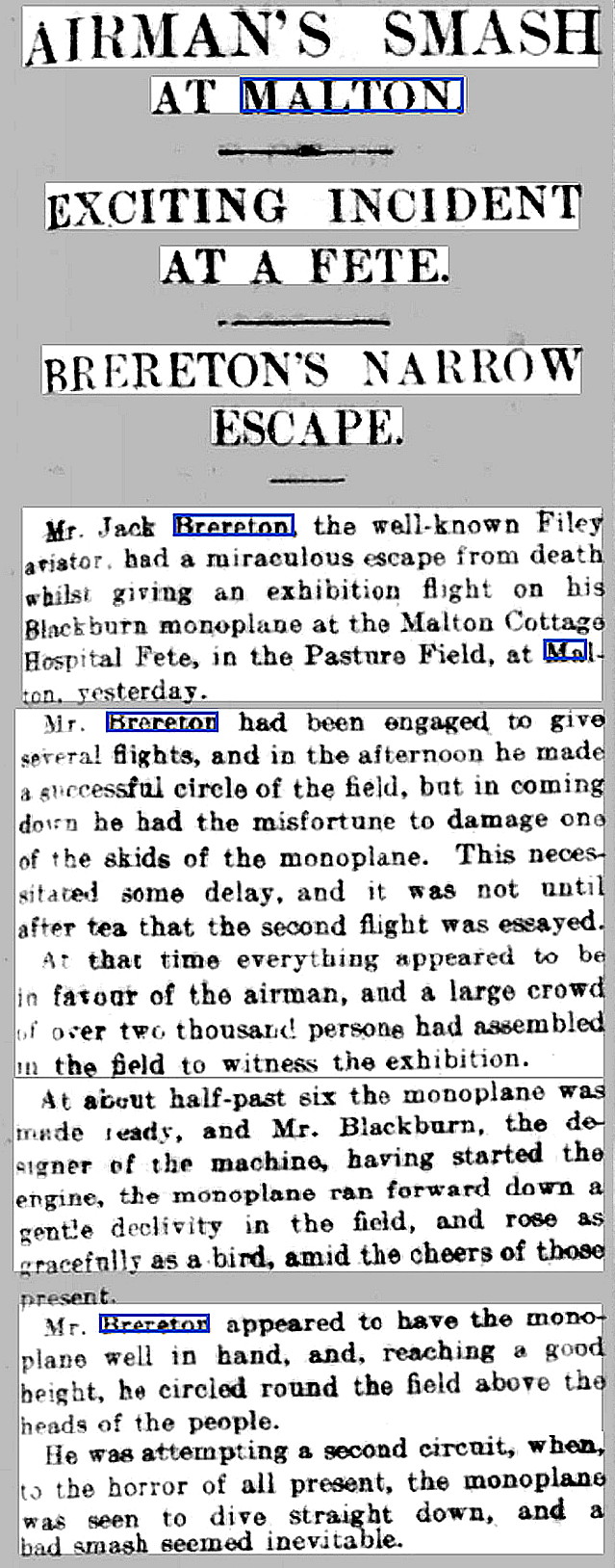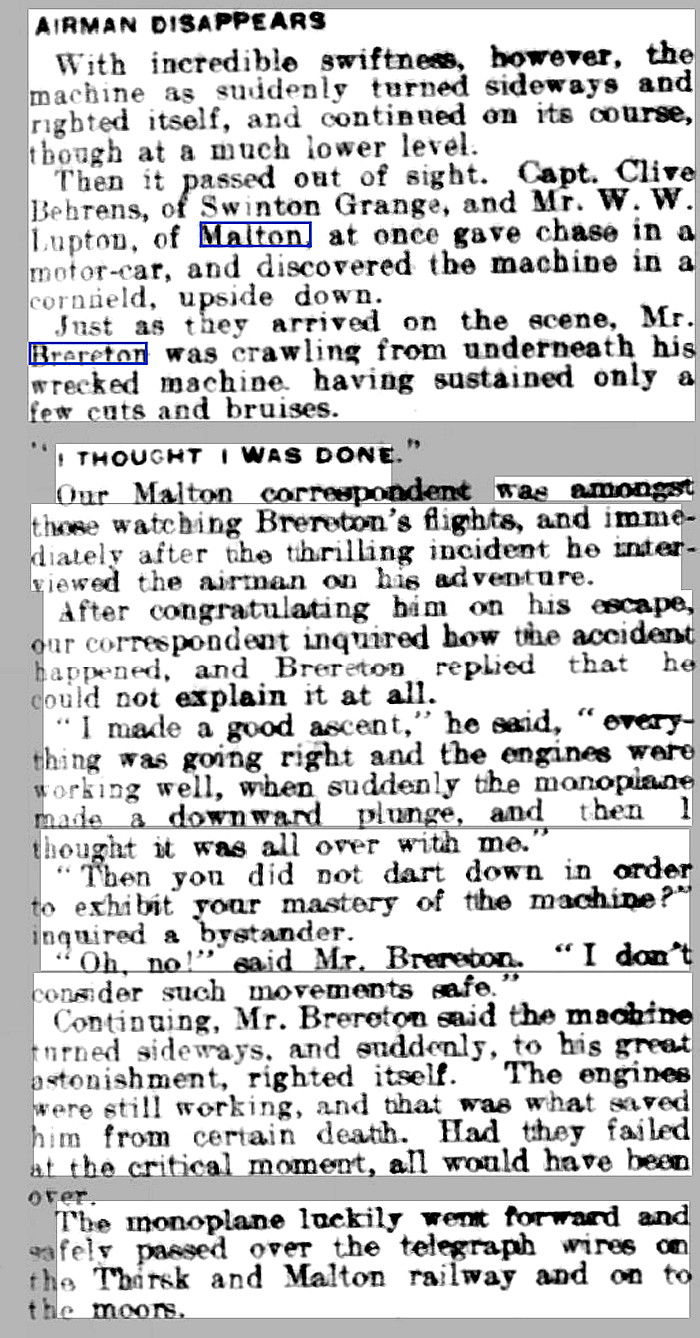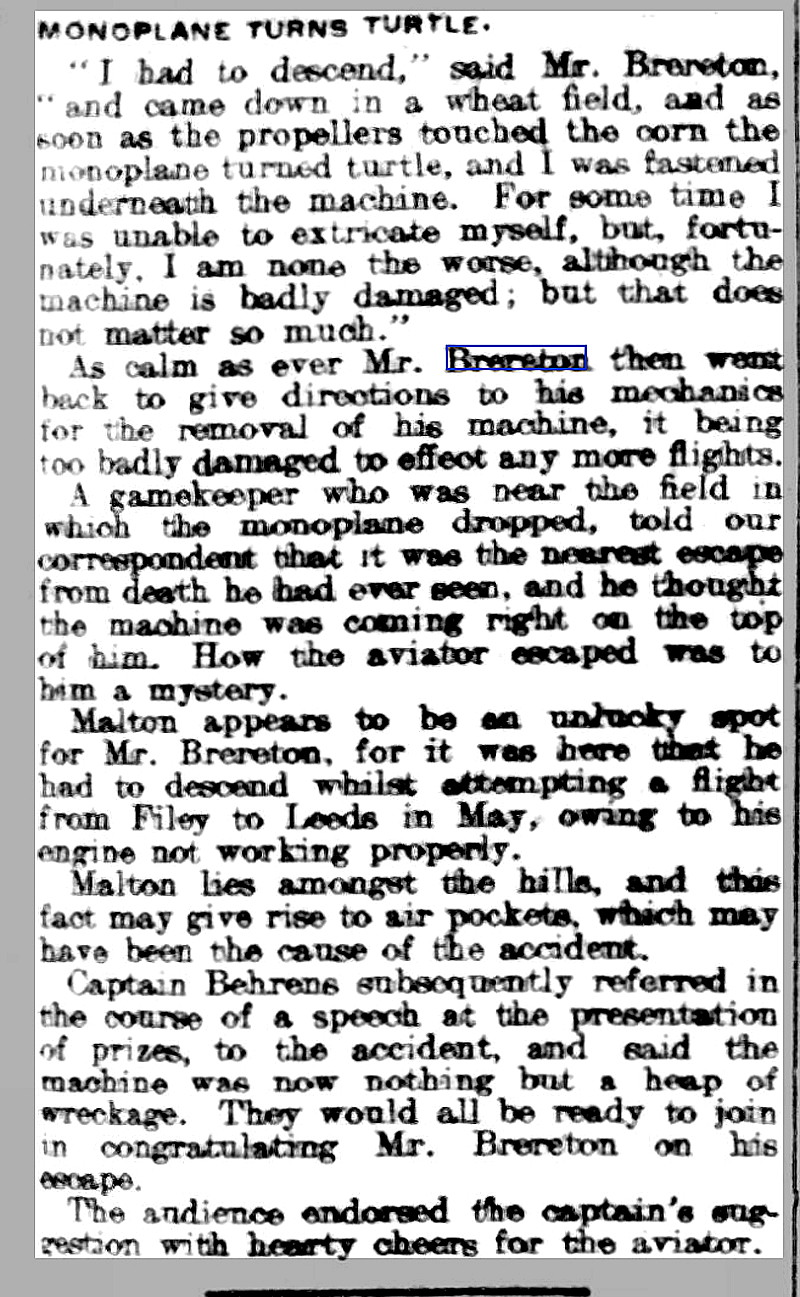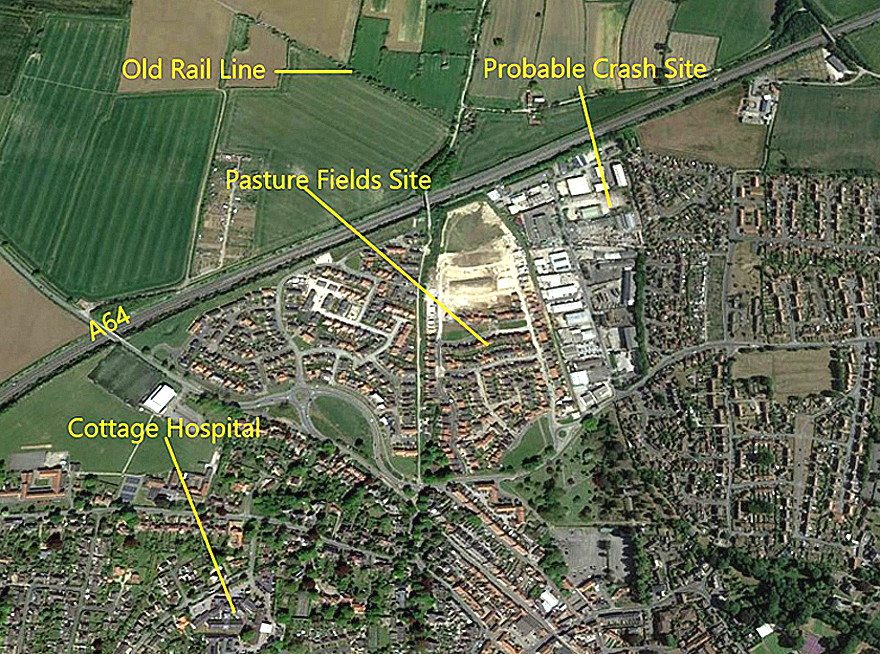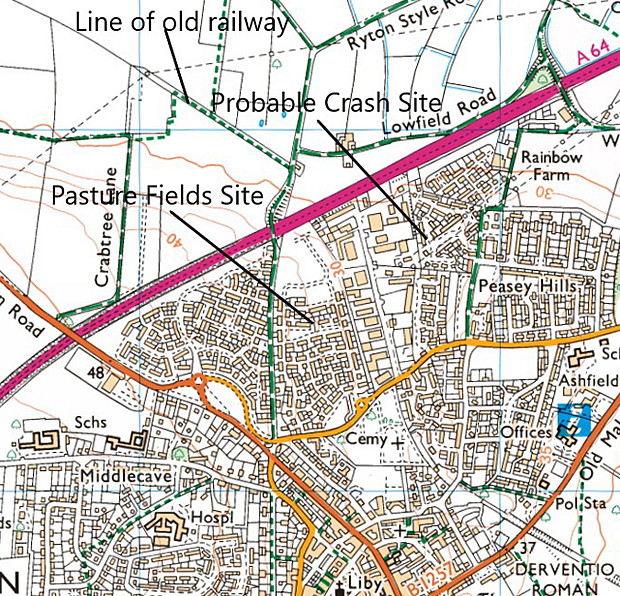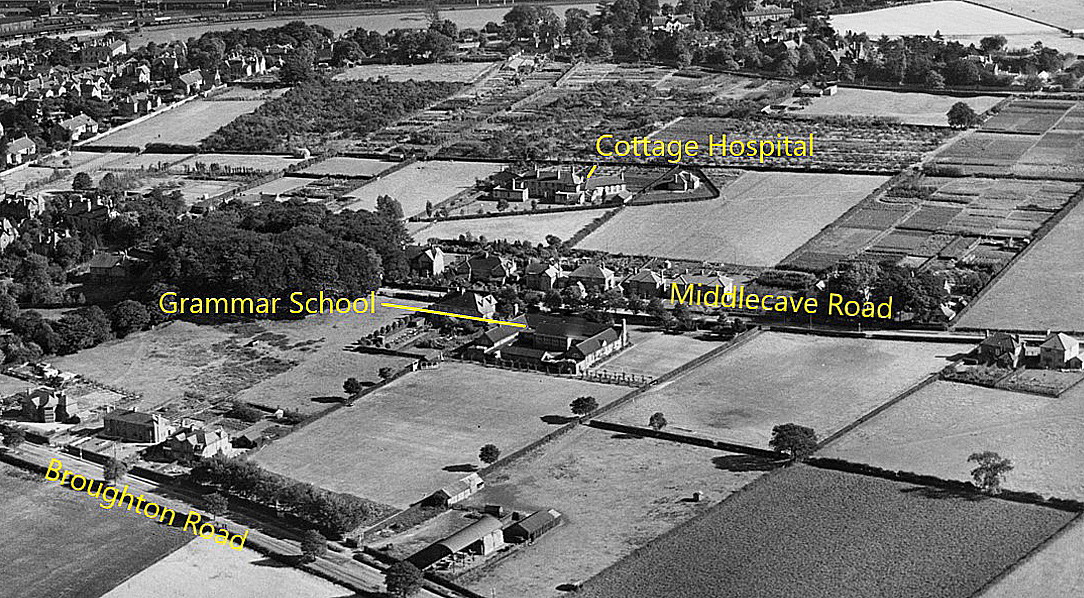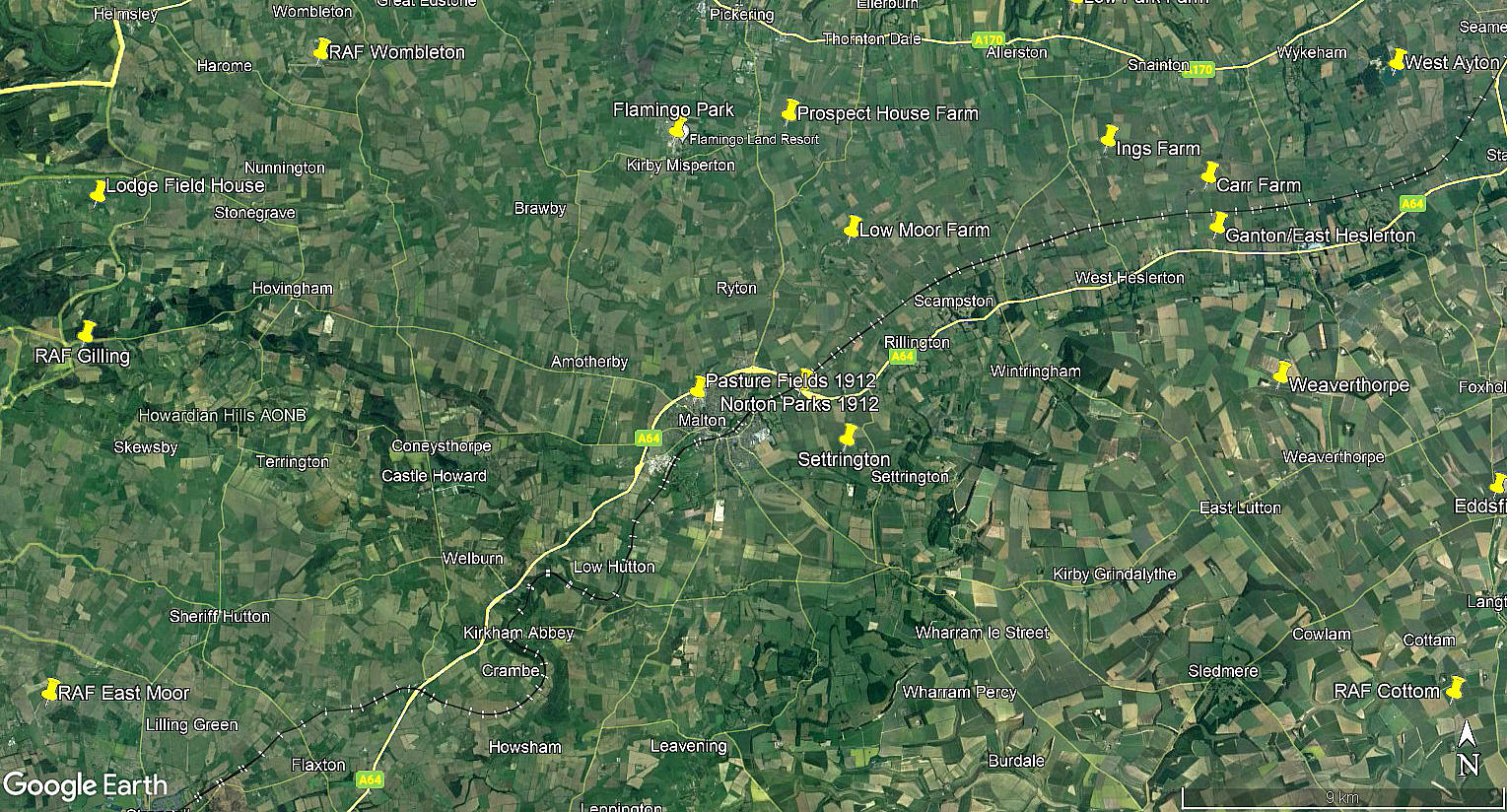Pasture Fields
PASTURE FIELDS: Temporary Landing Ground for an exhibition of flying (Aka MALTON)
Operated by: Mr John (Jack) Brereton
Location: Just N of Malton town centre
Period of operation: 25th July 1912
A MICHAEL T HOLDER GALLERY
We have Mike Holder, a great friend of this 'Guide', to thank for discovering this very little known venue and supplying the maps, pictures and articles.
Note: The article above was published in the Yorkshire Post and Leeds Intelligencer on the 26th July 1912.
This article in three parts was published in the Leeds Mercury on the 26th July 1912.
The aerial photo above shows the Cottage Hospital for which the event was being held, to raise funds. The local area view is from my Google Earth © derived database.
NOTES: We will never know the circumstances of this crash, but, we can now guess. It looks likely that he entered an incipient spin, if not a full spin. Nothing was known about how aeroplanes flew in those days, and certainly nothing about how to recover from an incipient spin, by which time it was too late. They had no airspeed indicator and as we know, the sensation of speed decreases very rapidly as you climb.
Also, the difference in airspeed between flying and stalling was very small in those days. Possibly as low as 10mph or so. Also, any degree of bank angle requires a certain amount of added power to be applied in such marginal machines, (as aeroplanes were usually called), to maintain altitude, and this was not available. As a general rule they flew with the engine running flat out.
Even in a 'skidding turn' with wings level, often a prefered method of turning in those days, the wing going into the turn if too much rudder was applied, could easily be induced to stall. I have the greatest admiration for those early aviators.....such a very risky busness. But of course, the problem was that, being fêted as heroes and hugely applauded, the desire to please the crowds greatly increased their will to 'push on'.
We'd love to hear from you, so please scroll down to leave a comment!
Leave a comment ...
Copyright (c) UK Airfield Guide















